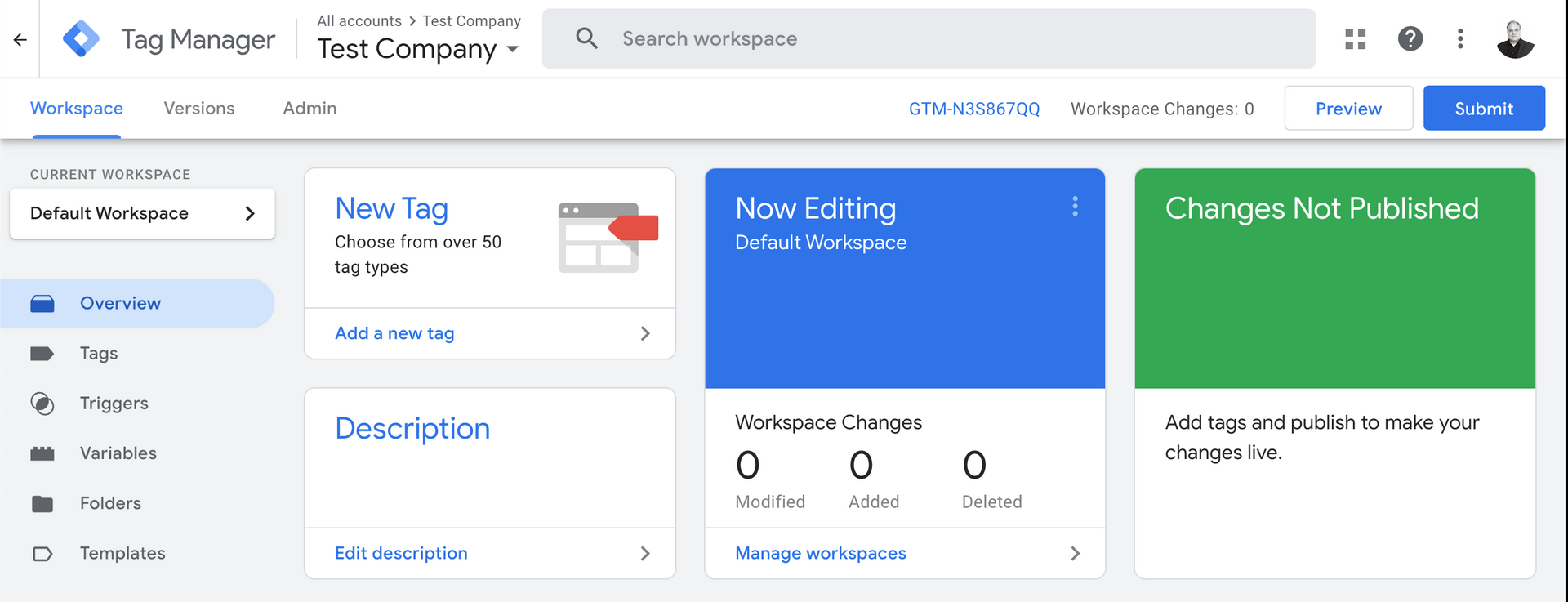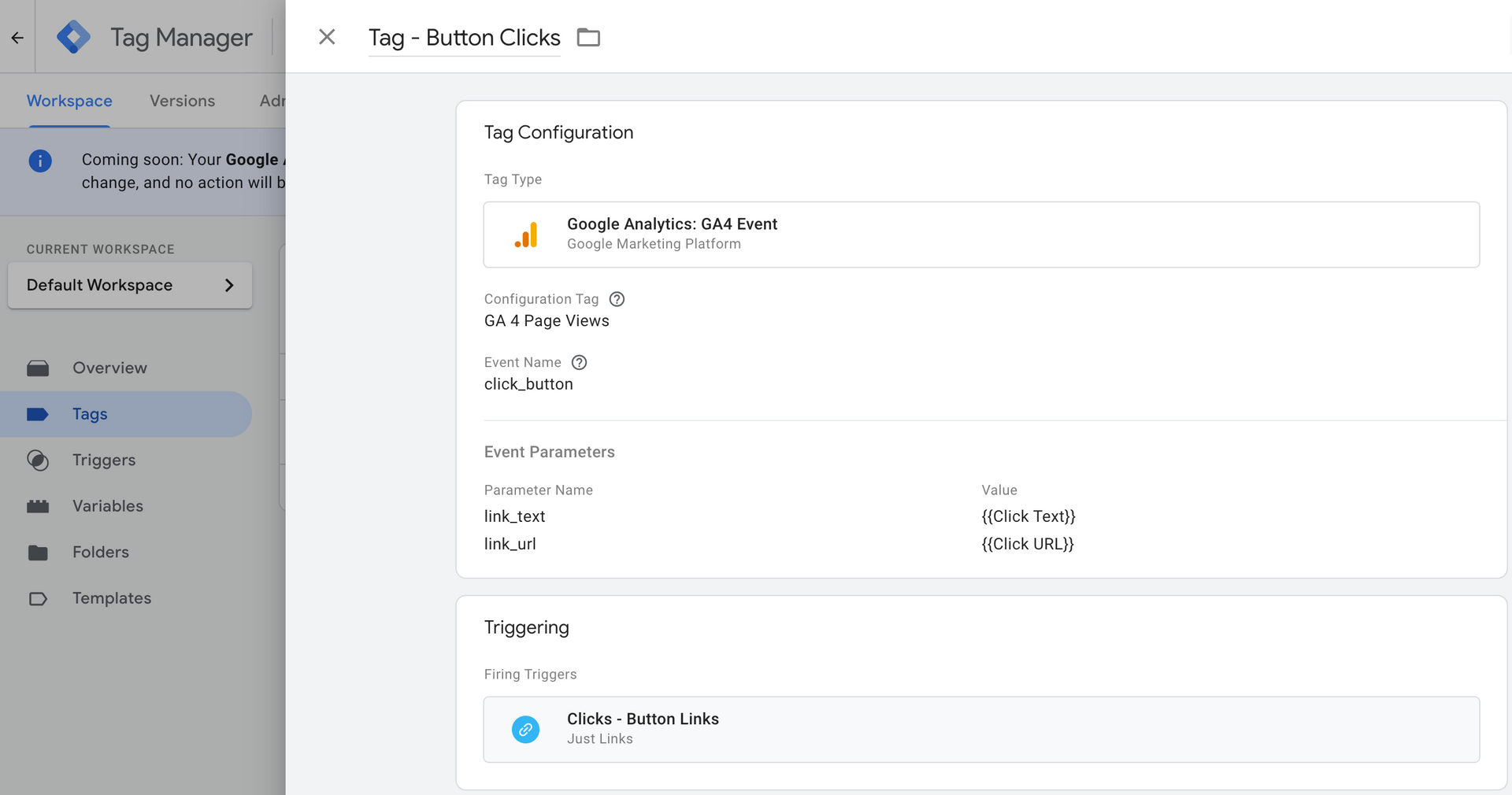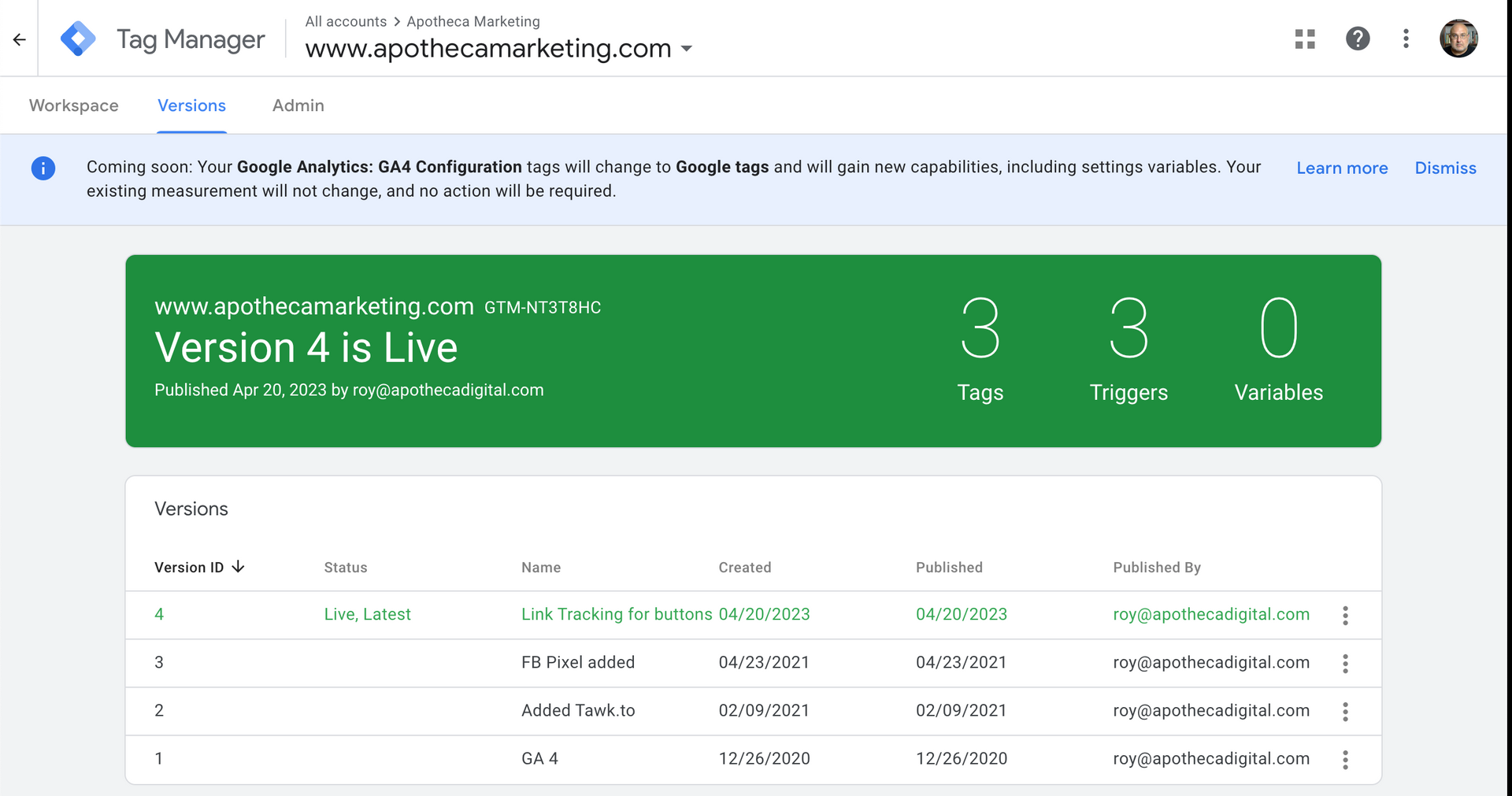Why Every Marketer Needs to Know About Google Tag Manager
Roy Bielewicz
Take control of your marketing tools and analytics with Google Tag Manager.
If you've been dipping your toes into marketing analytics, you've likely come across the term "Google Tag Manager" (or GTM for short), or tag management in general. Maybe you've even wondered if it's something you should be familiar with or if it's something that sounds a bit too techy to be in your comfort zone. Fear not! We’re going to help you not only understand what GTM is, but you'll also discover why it should become an essential tool in your toolkit.

So, What Exactly is Google Tag Manager?
Google Tag Manager is a free tool from Google that allows you to manage and deploy marketing tags (snippets of code or tracking pixels) on your website or mobile app without having to modify the code of your site directly. This frees you from having to add these code snippets to your site’s CMS or HTML, or remove them when you’re no longer using a particular tool. It also enables you to bypass your IT or development team if you don’t have direct access or the technical know-how to make direct changes to your site.

While the most common use for GTM is deploying and customizing your analytics tags for tools like Google Analytics 4 (GA4), it can also be used to add “pixels” or javascript code for other tracking needs. This includes Facebook pixel tracking, Google Ads conversion tags, as well as third party tools that can be deployed on the site with a snippet of javascript code. It’s also commonly used for deploying testing tools, chat widgets, email tools, survey tools, pop-up widgets, and more.
So basically, you and your marketing team are able to have much more freedom to quickly, and accurately add and trigger the marketing tracking codes and tools you need to your website or apps without having to depend on your IT team, and the inherent coding delays, site builds, etc., that can drag on for months.

Essential for Google Analytics 4
In the good ‘ol days before the forced migration to GA4, you could deploy Google Universal Analytics on many content management platforms by just adding the account ID to the system. However, GA4 often takes considerably more effort to deploy correctly, particularly for ecommerce sites. And because it’s relatively new, many CMSs have been slow to adapt, or to offer full implementations. This is due in part to how GA4 is deployed, and the level of customization that it takes to set up custom measurement events.
The good news is that these events, and the triggers that deploy them, can be set up in GTM, and typically don’t necessitate adding more code to your site. The one caveat is that ecommerce sites need to have a data layer that pulls data from the site (e.g., sales amounts, product information, coupon codes, tax information, etc.) in order to pass that dynamic data to GA4.
What this means is that it’s relatively easy to create an event for something that the marketing team wants to track, without involving developers or IT. Want to know how many people are
clicking on a specific button? You can add that tag and trigger within minutes.
Want to know how many people click on a chat widget? How about downloading a PDF? Fill out your contact form? All of those important events can be added and tracked just using GTM.

Other Benefits of GTM
Simplicity and Speed
As we’ve mentioned above, gone are the days when you'd need to wait for a developer to manually add, remove, or modify tags on your website. With GTM, you can deploy various tags effortlessly and quickly without needing to touch the site's CMS or code. This means faster implementation of your marketing strategies and faster access to data.
Flexibility
Whether it's Google Analytics, Facebook Pixel, or any other third-party tags, GTM supports them all. You can manage multiple tags from one centralized dashboard.
Safety First
GTM comes with a built-in debugging feature. This allows you to test and ensure your tags are working correctly before they go live. Plus, with its version control feature, you can easily roll back to previous configurations if needed.
Ease of Collaboration
Working with a team? GTM allows multiple users to access the account, making collaboration smooth and efficient. You can also set up different permission levels to maintain control over who can publish changes. There is also a notation system, where each time someone publishes changes, they can explain what those changes are, what they’re for, and who did it.
Getting Started with Google Tag Manager
Starting with GTM is straightforward. Sign up for a free account (tagmanager.google.com), set up your container (which will hold all your tags), and you're good to go. Once your container is ready, you'll be provided with a unique code. This code needs to be added to your website, and voila! You can now manage all your tags from GTM's dashboard.
Okay, it’s not that easy to set up GA4 and some of the other customization options that are available in GTM. However, we’re adding more how-to videos on our YouTube channel that walk through this process, so be sure to check it out! (And you know, like and subscribe!)
In Conclusion
For marketers, the digital landscape can sometimes feel like a complex maze of tools, technical issues, and hurdles from developers and IT teams. However, tools like Google Tag Manager act can simplify the processes and help you deploy your measurement and marketing tools more quickly. Whether you're a seasoned pro or just starting out, integrating GTM into your workflow can make a world of difference.
Remember, it's not about working harder; it's about working smarter. And GTM is one smart tool you definitely want in your arsenal.
Contact Us





